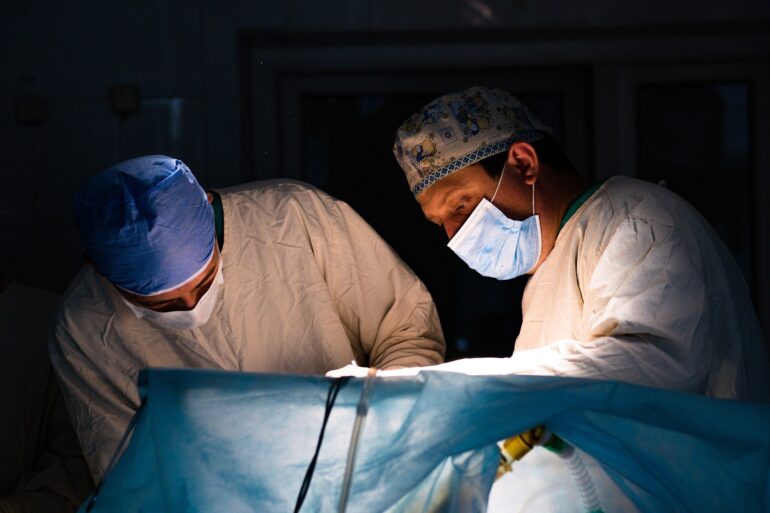TL;DR:
- Machine learning is transforming healthcare, improving efficiency and reducing errors.
- Researchers are utilizing AI to convert medical scans into interactive 3D and 4D models for pre-surgical planning.
- A collaboration between OSF HealthCare and Bradley University aims to provide surgeons with a VR perspective of patients’ hearts in 4D.
- The automated image conversion can potentially reduce the time from months to hours, benefiting patients worldwide.
- The technology has the potential for broader applications beyond cardiac cases.
- Dr. Matthew Bramlet sees this innovation as revolutionizing pre-surgical planning and scalability in medical models.
Main AI News:
In the ever-evolving realm of technology, machine learning stands out as a true game-changer, permeating various sectors and revolutionizing healthcare in particular. Its profound impact on the medical landscape lies in its ability to heighten efficiency, minimize human errors, and liberate valuable time for more critical tasks. Among the most promising frontiers for this revolutionary technology is the domain of surgical preparation, wherein machine learning holds the potential to reshape practices, especially in complex cases, through the conversion of medical scans into interactive 3D and 4D models. A convergence of AI and medicine now offers an innovative way to tackle intricate cardiac and cancer cases via the creation of dynamic 3D and 4D interactive models, tailored explicitly for pre-surgical planning.
The heart, a truly unique organ, undergoes continual shape-shifting as it tirelessly pumps life-giving blood throughout the body. In cases where abnormal heart muscle growth impedes its optimal function, surgeons face formidable challenges. Presently, the technology available does not afford surgeons a 4D view of this dynamic obstruction, leaving them to rely on years of experience to determine the best approach to excising the affected muscle and alleviating the obstruction. In an exciting collaboration between OSF HealthCare and Bradley University, researchers are laboring to provide surgeons with an unprecedented virtual reality (VR) perspective of their patients’ hearts, endowing them with a 4D view of contractions and expansions.
This visionary concept has been demonstrated previously, but the process of converting 4D heart images has proven to be time-consuming and, consequently, unsustainable. However, the research team firmly believes that the integration of machine learning can mechanize this complex process, granting surgeons the ability to virtually examine a patient’s beating heart in 4D and detect any obstructions with ease. The advent of this ground-breaking pre-surgical analysis tool promises a comprehensive view of the heart’s structure, significantly augmenting the understanding of its intricate anatomy—a first-of-its-kind innovation poised to redefine the landscape of cardiac surgery.
The implications of this automated solution are awe-inspiring, as it has the potential to slash the time required for image conversion from months to mere hours or even minutes. The ripple effects of this technology could extend beyond cardiac cases, with the possibility of application to other intricate medical scenarios, ultimately benefiting patients across all age groups. The AI-enabled software, in its scalable nature, can be readily adopted by surgeons worldwide, catalyzing transformative pre-surgery planning in medical facilities around the globe. The researchers harbor the ambitious goal of automating the conversion of cardiac CTs into VR through machine learning algorithms within a year’s time. This paradigm-shifting 4D view will empower surgeons to visualize patients’ beating hearts and meticulously blueprint surgical interventions in virtual reality before ever stepping foot into the operating room.
Dr. Matthew Bramlet, a distinguished pediatric cardiologist at the University of Illinois College of Medicine, enthusiastically affirms that the ramifications of this technological leap will extend far beyond the realms of the 4D heart view. He envisions a revolution in the scalability of creating models for pre-surgical planning, ushered in by the advent of 3D printing or VR, and set to reshape the very essence of medical practice.
Conclusion:
The integration of machine learning in surgical preparation signifies a major leap in the healthcare market. The ability to create interactive 3D and 4D models for pre-surgical planning, especially in complex cardiac and cancer cases, can significantly enhance surgical outcomes and patient care. Automated image conversion and the adoption of VR technology offer scalable solutions that can revolutionize pre-surgery planning worldwide. This innovation has the potential to reshape medical practices, making surgical procedures more efficient and accurate and opening doors to new possibilities in the field of healthcare. As AI and machine learning continue to advance, we can expect further disruptive and transformative changes in the medical landscape. Businesses and healthcare providers that embrace these advancements will likely gain a competitive edge, delivering improved services and better patient outcomes.

